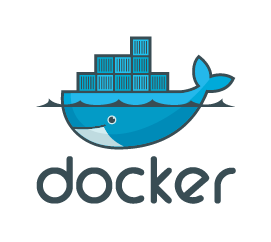Quickstart Guide
Overview
A Docker swarm service for automatically updating your services whenever their base image is refreshed.
This Wiki Post will guide you through setting up Shepherd for Docker Swarm.
Prerequisite
Having a running Docker Swarm Enviroment (https://wiki.aeoneros.com/books/docker-guide/chapter/swarm-mode)
Usage
Docker CLI
docker service create --name shepherd \
--constraint "node.role==manager" \
--mount type=bind,source=/var/run/docker.sock,target=/var/run/docker.sock,ro \
containrrr/shepherd
Docker Compose
version: "3"
services:
shepherd:
image: containrrr/shepherd
environment:
TZ: 'US/Eastern'
SLEEP_TIME: '5m'
FILTER_SERVICES: ''
VERBOSE: 'true'
volumes:
- /var/run/docker.sock:/var/run/docker.sock
deploy:
placement:
constraints:
- node.role == manager
Compose Examples:
docker-compose.apprise.yml
version: "3"
services:
app:
image: containrrr/shepherd
environment:
APPRISE_SIDECAR_URL: notify:5000
TZ: 'US/Eastern'
SLEEP_TIME: '5m'
FILTER_SERVICES: ''
VERBOSE: 'true'
volumes:
- /var/run/docker.sock:/var/run/docker.sock
networks:
- notification
deploy:
placement:
constraints:
- node.role == manager
notify:
image: mazzolino/apprise-microservice:0.1
environment:
NOTIFICATION_URLS: mailtos://user:pass@domain/?to=target@example.com
networks:
- notification
networks:
notification:
docker-compose.labels.yml
version: "3"
services:
shepherd:
image: containrrr/shepherd
environment:
# Beware YAML gotchas regarding quoting:
# With KEY: 'VALUE', quotes are part of yaml syntax and thus get stripped
# but with KEY='VALUE', they are part of the value and stay there,
# causing problems!
SLEEP_TIME: "1d"
TZ: "US/Eastern"
VERBOSE: "true"
IGNORELIST_SERVICES: "label=shepherd.autodeploy=false"
FILTER_SERVICES: "label=shepherd.autodeploy=true"
volumes:
- /var/run/docker.sock:/var/run/docker.sock
deploy:
placement:
constraints:
- node.role == manager
# Explicitly enable shepherd for this service
updating-app:
image: hello-world
deploy:
labels:
- shepherd.autodeploy=true
# Explicitly disable shepherd for this service
not-updating-app:
image: hello-world
deploy:
labels:
- shepherd.autodeploy=false
# Implicitly disable shepherd for this service
# because of FILTER_SERVICES above
another-not-updating-app:
image: hello-world
docker-compose.swarm-cronjob.yml
version: "3"
services:
app:
image: containrrr/shepherd
environment:
TZ: 'US/Eastern'
FILTER_SERVICES: ''
IGNORELIST_SERVICES: "test"
RUN_ONCE_AND_EXIT: "true"
volumes:
- /var/run/docker.sock:/var/run/docker.sock:ro
deploy:
replicas: 0
restart_policy:
condition: none
labels:
- swarm.cronjob.enable=true
# Start service every day at midnight
- swarm.cronjob.schedule=0 0 0 * * *
- swarm.cronjob.skip-running=true
placement:
constraints:
- node.role == manager
scheduler:
image: crazymax/swarm-cronjob:latest
volumes:
- /var/run/docker.sock:/var/run/docker.sock:ro
environment:
- "TZ=Europe/Berlin"
- "LOG_LEVEL=info"
- "LOG_JSON=false"
deploy:
placement:
constraints:
- node.role == manager
How does it work?
Shepherd triggers updates by updating the image specification for each service, removing the current digest. Docker resolves the image tag, checks the registry for a newer version, and updates running container tasks as needed. Docker handles rolling updates, minimizing downtime for replicated services.
Configuration / Environment Variables
Below is a table of environment variables used for configuring Shepherd:
| Environment Variable | Description | Example Value |
|---|---|---|
| SLEEP_TIME | Time interval between update checks (default: 5 minutes) | 5m |
| IGNORELIST_SERVICES | Space-separated list of services to ignore during updates | shepherd my-other-service |
| FILTER_SERVICES | Filter for specifying services to update (matches docker service ls filter) | label=com.mydomain.autodeploy |
| ROLLBACK_ON_FAILURE | Roll back a service to the previous version if an update fails | true |
| UPDATE_OPTIONS | Additional options for the docker service update command | --update-delay=30s |
| TIMEOUT | Timeout for the docker service update process (default: 5 minutes) | 300 |
| APPRISE_SIDECAR_URL | URL for the Apprise sidecar service to enable update notifications | apprise-microservice:5000 |
| IMAGE_AUTOCLEAN_LIMIT | Enable old image autocleaning on service update | 5 |
| RUN_ONCE_AND_EXIT | Run Shepherd once and then exit | true |
| WITH_REGISTRY_AUTH | Enable private registry authentication | true |
| REGISTRY_USER / REGISTRY_PASSWORD | Credentials for private registry authentication | user123 / secret_password |
| REGISTRIES_FILE | Path to the secret file containing multiple registry authentication entries | /var/run/secrets/shepherd-registries-auth |
| WITH_INSECURE_REGISTRY | Enable connection to an insecure private registry | true |
| WITH_NO_RESOLVE_IMAGE | Prevent pulling images from the registry | true |
| TZ | Set the timezone for log entries | Europe/Zurich |
Use Private Registry Authentication
Use Private Registry Authentication
Use Private Registry Authentication
You can enable private registry authentication by setting the WITH_REGISTRY_AUTH variable. Use REGISTRY_USER and REGISTRY_PASSWORD for a single registry. If using multiple accounts, create a secret file with the following format:
idregistryloginpasswordExample:
blog registry.gitlab.com gitlab+deploy-token-5123674 ssw2Nrd2Create the Docker secret:
docker secret create shepherd-registries-auth private/shepherd-registries-authThen use the secret in your docker-compose.yml:
services:
app:
image: containrrr/shepherd
environment:
REGISTRIES_FILE: /var/run/secrets/shepherd-registries-auth
secrets:
- shepherd-registries-auth
secrets:
shepherd-registries-auth:
external: true
Add a label to specify the correct line from the secret file:
deploy:
labels:
- shepherd.enable=true
- shepherd.auth.config=blog
Set WITH_INSECURE_REGISTRY to true to connect to an insecure private registry.
Set WITH_NO_RESOLVE_IMAGE to true to prevent pulling images from the


